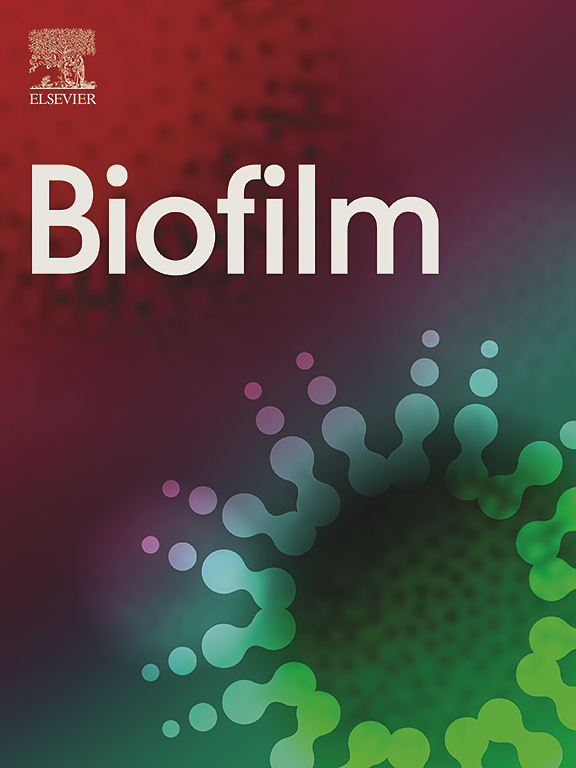Multipronged impact of environmental temperature on Staphylococcus aureus infection by phage Kayvirus rodi: Implications for biofilm control
IF 4.9
Q1 MICROBIOLOGY
引用次数: 0
Abstract
Environmental cues sometimes have a direct impact on phage particle stability, as well as bacterial physiology and metabolism, having a profound effect on phage infection outcome. Here, we explore the impact of temperature on the interplay between phage Kayvirus rodi (phiIPLA-RODI) and its host, Staphylococcus aureus. Our results show that phiIPLA-RODI is a more effective predator at room (25 °C) compared to body temperature (37 °C) against planktonic cultures of several strains with varying degrees of phage susceptibility. This result differs from most known examples of temperature-dependent phage infection, in which optimum infection is correlated with the host growth rate. Further characterization of this phenomenon was carried out with strains IPLA15 and IPLA16, whose respective MICs were 7 log units and a 1-log unit higher at 37 °C than at 25 °C. Our results demonstrated that the phage also had a greater impact at room temperature during biofilm development and for the treatment of preformed biofilms. There was no difference in phage adsorption between the two temperatures for strain IPLA16. Conversely, adsorption of phiIPLA-RODI to IPLA15 was reduced at 37 °C compared to 25 °C. Moreover, confocal microscopy analysis indicated that the biofilm matrix of both strains has a greater content of PIA/PNAG at 37 °C than at 25 °C. Regarding infection parameters, we observed longer duration of the lytic cycle at 25 °C for both strains, and infection of IPLA15 by phiIPLA-RODI resulted in a smaller burst size at 37 °C than at 25 °C. Finally, we also found that the rate of phage resistant mutant selection was higher at 37 °C for both strains. Altogether, this information highlights the impact that bacterial responses to environmental factors have on phage-host interactions. Moreover, phage phiIPLA-RODI appears to be a highly effective candidate for biofilm disinfection at room temperature, while its efficacy in biofilm-related infections will require combination with other antimicrobials.
环境温度对金黄色葡萄球菌感染的多管齐下影响:对生物膜控制的影响。
环境因素有时会直接影响噬菌体颗粒的稳定性,以及细菌的生理和代谢,对噬菌体感染的结果产生深远的影响。在这里,我们探讨了温度对噬菌体Kayvirus rodi (phipla - rodi)与其宿主金黄色葡萄球菌相互作用的影响。我们的研究结果表明,与体温(37°C)相比,phipla - rodi在室温(25°C)下对几种具有不同程度噬菌体敏感性的菌株的浮游培养物更有效。这一结果不同于大多数已知的温度依赖性噬菌体感染的例子,其中最佳感染与宿主生长速率相关。用菌株IPLA15和IPLA16进一步表征了这一现象,它们在37°C时的mic分别比25°C时高7个log单位和1个log单位。我们的研究结果表明,噬菌体在室温下对生物膜发育和预成型生物膜的处理也有更大的影响。菌株IPLA16在两个温度下对噬菌体的吸附量没有差异。相反,phipla - rodi对IPLA15的吸附在37°C时比25°C时减少。此外,共聚焦显微镜分析表明,这两种菌株在37°C时的生物膜基质中PIA/PNAG的含量高于25°C时的含量。在感染参数方面,我们观察到这两种菌株在25°C下的裂解周期持续时间更长,并且phipla - rodi感染IPLA15在37°C下的破裂大小比25°C时小。最后,我们还发现,在37°C下,两株菌株的噬菌体抗性突变选择率更高。总之,这些信息强调了细菌对环境因素的反应对噬菌体-宿主相互作用的影响。此外,噬菌体phipla - rodi似乎是室温下生物膜消毒的高效候选药物,而其对生物膜相关感染的有效性需要与其他抗菌剂联合使用。
本文章由计算机程序翻译,如有差异,请以英文原文为准。
求助全文
约1分钟内获得全文
求助全文

 求助内容:
求助内容: 应助结果提醒方式:
应助结果提醒方式:


